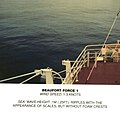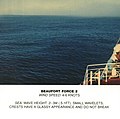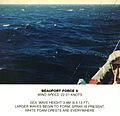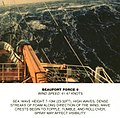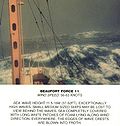Beaufort scale
empirical measure describing wind speed based on observed conditions From Wikipedia, the free encyclopedia
Remove ads
The Beaufort scale is a scale for measuring wind speeds. It is based on observation rather than accurate measurement. It is the most widely used system to measure wind speed today. The scale was developed in 1805 by Francis Beaufort, an officer of the Royal Navy and first officially used by HMS Beagle.
There are twelve levels, including 0 for "no wind". From 1946 to 1970, there were also Beaufort levels 13 to 17. All of them were labelled as Hurricane. Because they were only used in special cases, they are no longer in use internationally. China and Taiwan still use them, however, due to their frequent typhoons.
The wave heights given are for waves on the open ocean, not near the shore.
The Douglas Sea Scale and Douglas Wind Scale are similar, but they separate the sea conditions from the wind measurements.
Remove ads
The scale
Images
- 1 Beaufort
- 2 Beaufort
- 3 Beaufort
- 4 Beaufort
- 5 Beaufort
- 6 Beaufort
- 7 Beaufort
- 8 Beaufort
- 9 Beaufort
- 10 Beaufort
- 11 Beaufort
- 12 Beaufort
Remove ads
Other websites
- UK Meteorological Office: The Beaufort Scale
- Investigating Clouds Archived 2006-10-19 at the Wayback Machine a lesson plan from the National Science Digital Library that uses the Beaufort Scale.
- Radio interview with Scott Huler.
- OceanWeather.com gives current graphics for wind, waves and temperature
- Open Source Textbook at Oceanworld.tamu.edu Archived 2016-03-06 at the Wayback Machine [broken link] cites the original definition formula in chapter 4 Archived 2009-08-03 at the Wayback Machine
- Howtoon Poster Archived 2008-12-06 at the Wayback Machine showing effects on land/sea effects at each step.
Remove ads
Wikiwand - on
Seamless Wikipedia browsing. On steroids.
Remove ads













